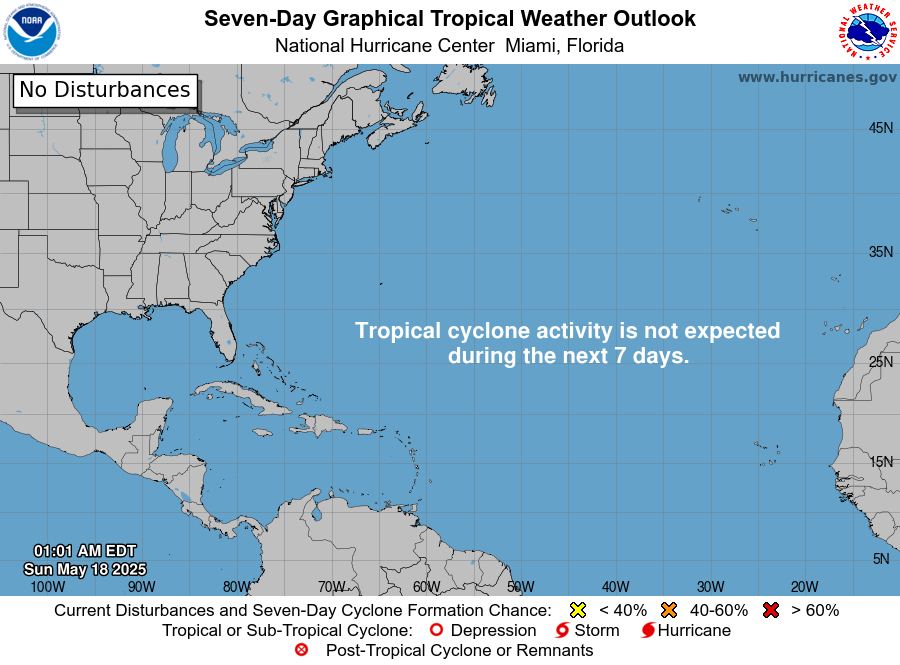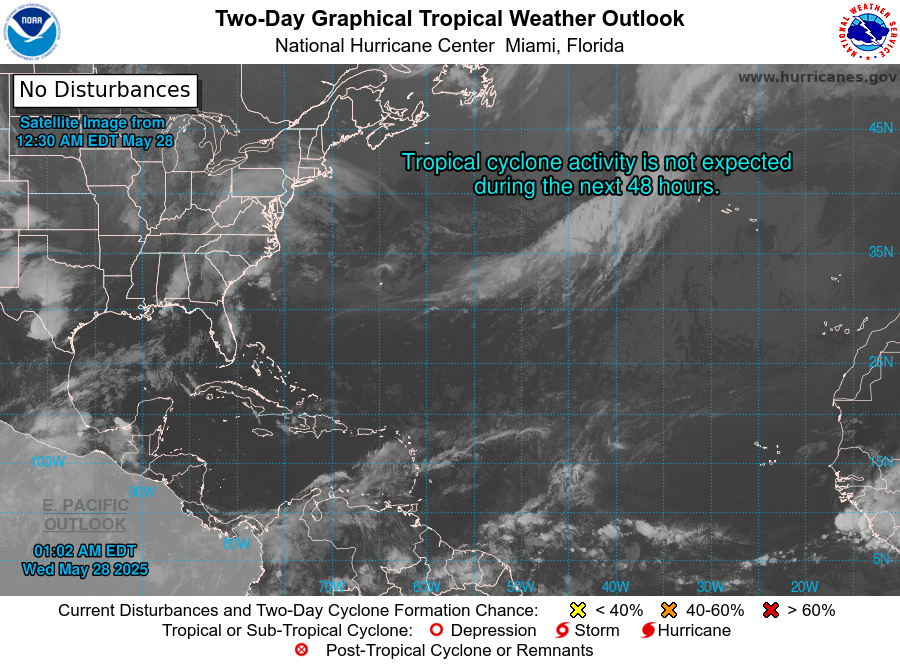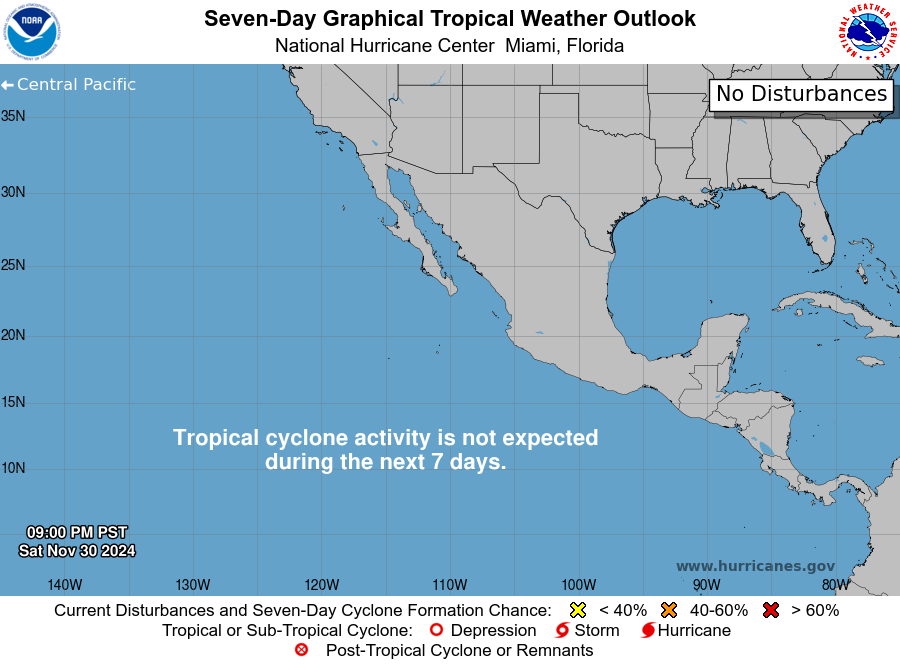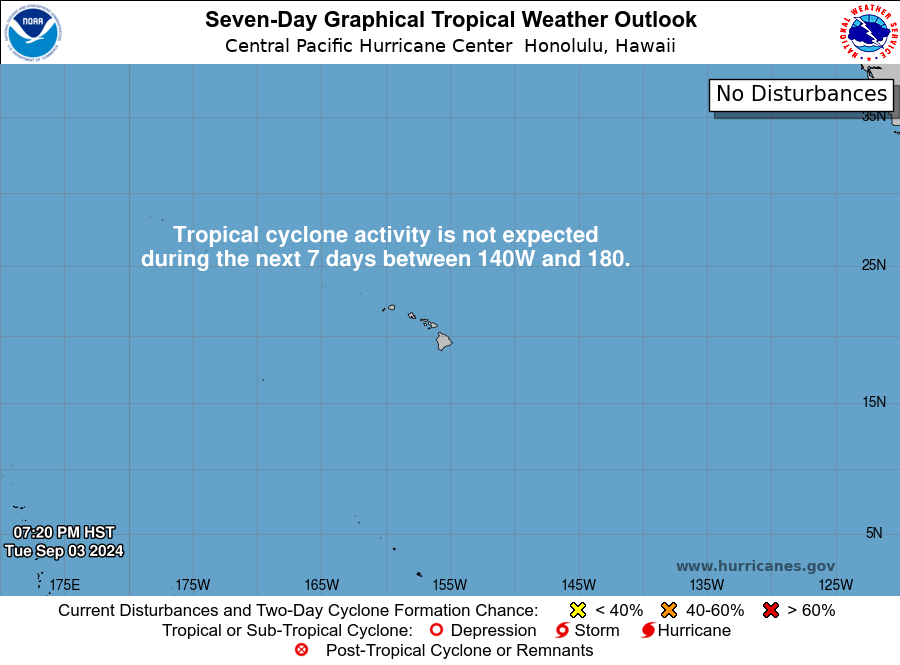GRAND RAPIDS, Mich. (WOOD) November 18, 2024 – Monday
Tropical Storm “Sara” has been producing heavy rain in Honduras, Guatemala and Belize and will still produce some heavy showers today in southern Mexico as a weakened tropical depression.


Sara has produced some heavy rainfall and local flooding

Here’s a satellite pic. of the Atlantic. Besides Sara, there are no other tropical storms or depressions in the Atlantic.

Here’s the current forecast track of the storm of Sara.
From the National Hurricane Center - For the North Atlantic...Caribbean Sea and the Gulf of Mexico:
DISCUSSION AND OUTLOOK
----------------------
At 900 PM CST (0300 UTC) Sunday night, the center of Tropical Depression Sara was located inland near latitude 18.1 North, longitude 90.7 West. The
depression is moving toward the west-northwest near 13 mph (20
km/h), and this general motion should continue overnight. On the
forecast track, the center of Sara will continue to move over the
Yucatan Peninsula through Monday morning.
Maximum sustained winds have decreased to near 30 mph (45 km/h) with
higher gusts. Further weakening is expected, and Sara is forecast to
become a remnant low or open into a trough of low pressure by Monday
morning.
The estimated minimum central pressure is 1004 mb (29.65 inches)
I'll try and do a daily update on this thread during the week.
**************************************************************************
“Rafael” was a category three hurricane on November 6th. It pounded western Cuba (leaving much of the island without power again) and then moved out into the Gulf of Mexico. The storm diminished quickly as it lost upper support.

The map above shows the last track of Rafael before it faded away.

Tropical depression Patty dissipated west of Portugal on Nov. 4.

There will likely be no tropical activity in the Eastern Pacific in the next week (and probably beyond). The yellow X has no chance of tropical development.
Here’s the Eastern Pacific Tropical Discussion in English and in Spanish.

The map above is the Central Pacific Ocean (with Hawaii in the middle of the map). There will be no tropical storm activity in the next week in the Central Pacific.

Here’s the tracks of the tropical storms and hurricanes in the Atlantic Sector in 2024.
Here’s Southern U.S. combined satellite and radar.

The graphic above shows the average number of hurricanes and tropical storms from May through December. The peak of the Atlantic hurricane season was Sept. 10. Now we’re on the downhill climatologically. Few major hurricanes occur in November. The hurricane season ends Nov. 30th.
Here’s a summary of tropical storm and hurricane activity in the eastern Pacific so far this year.

Here’s a satellite view of the western Pacific and Indian Oceans. The western Pacific was quite active last week, but has quieted down this week. There is one tropical storm, Man-Yi. This is the last (for a while) tropical system to move over the inland of Luzon in the Philippines. The storm will slowly weaken as it heads toward the island of Hainan and then Viet Nam.
“Man-Yi” passed by Guam as it intensified into a hurricane. There must be some kind of hurricane magnet on the north side of Luzon, because they were hit by several tropical storms and hurricanes.

“Yinxing came into Vietnam and dissipated. The storm produced significant damage on the north coast of the island of Luzon in the Philippines.

Tropical Storm “Toraji” was the second storm in a week to hit the island of Luzon in the Philippines. This storm has dissipated in the South China SeaTropical Storm “Usagi” passed by northern Luzon. Then it dissipated as it approached Taiwan.

We are also tracking a hurricane in the central Indian Ocean. This one is named “Bheki”. It will weaken slowly as it moves west toward the island of Madagascar.

Here’s the latest ACE Index, a measure of the number and strength of tropical storms and hurricanes. The North Atlantic Sector has a cumulative season ACE of 162.6. That compares to an average ACE-to-date of 117.7. So, that’s 135% of average ACE-to-date. It has been an active year for hurricanes in the Atlantic Sector and the Southeast U.S.
Of that 161.6 ACE, 35.1 of that came from long-lived hurricane Beryl. Hurricane Helene accumulated only 7.1 ACE Points because it was only a hurricane for two days. However, Helene was the deadliest and costliest hurricane of the season in the Atlantic sector.
Two other named storms, Alberto and Chris were much smaller and short-lived and then we had Debby, which was a Category 1 storm and Ernesto, that gave 84 mph winds to the island of Bermuda. Francine added a little to the Atlantic ACE as came ashore and hit Mississippi and Louisiana. Tropical Storm “Gordon” reached tropical storm status for 2 days in the mid-Atlantic. It did not affect land areas. We then had hurricane “Kirk” and hurricane “Leslie“, followed by “Milton” (that did considerable damage in central Florida), “Nadine” and “Oscar” (which produced significant flooding in eastern Cuba). “Patty” was a brief and inconsequential storm that remained far from land. “Rafael” ramped up to Category 3 status on Nov. 6 but then faded away just as quickly as it moved into the Gulf of Mexico. Sara is a fading depression in the Yucatan Peninsula of Mexico.
All other global sectors have well below ACE-to-date figures. It was the quietest start ever for the eastern Pacific. The ACE in the eastern Pacific sector is currently at just 82.0. Average-to-date ACE for this sector is 131.6. That’s just 62.3% of average ACE-to-date.
The Western Pacific Ocean Sector has an ACE-to-date of 203.0, compared to an average ACE-to-date of 274.0. This is just 74.0% of average ACE-to-date.
The North Indian Ocean has an ACE-to-date of 6.3, again well below the average ACE-to-date of 19.4. That’s about 1/3rd of the average ACE. However, a tropical storm has formed in the Indian Ocean. It’s called “Bheki“. The storm has reached hurricane status but will now slowly dissipate.
If you take the entire globe, you get a current ACE-to-date of 463.7. That compares to an average ACE-to-date of 552.3 and that’s just 83.9% of average ACE-to-date.
So, while we’ve had an active year for hurricanes in the U.S. and the Atlantic Sector, if you look at the entire globe, this has been a relatively quiet year for tropical storm activity.
Keep coming back to Bill’s Blog for tropical updates.











